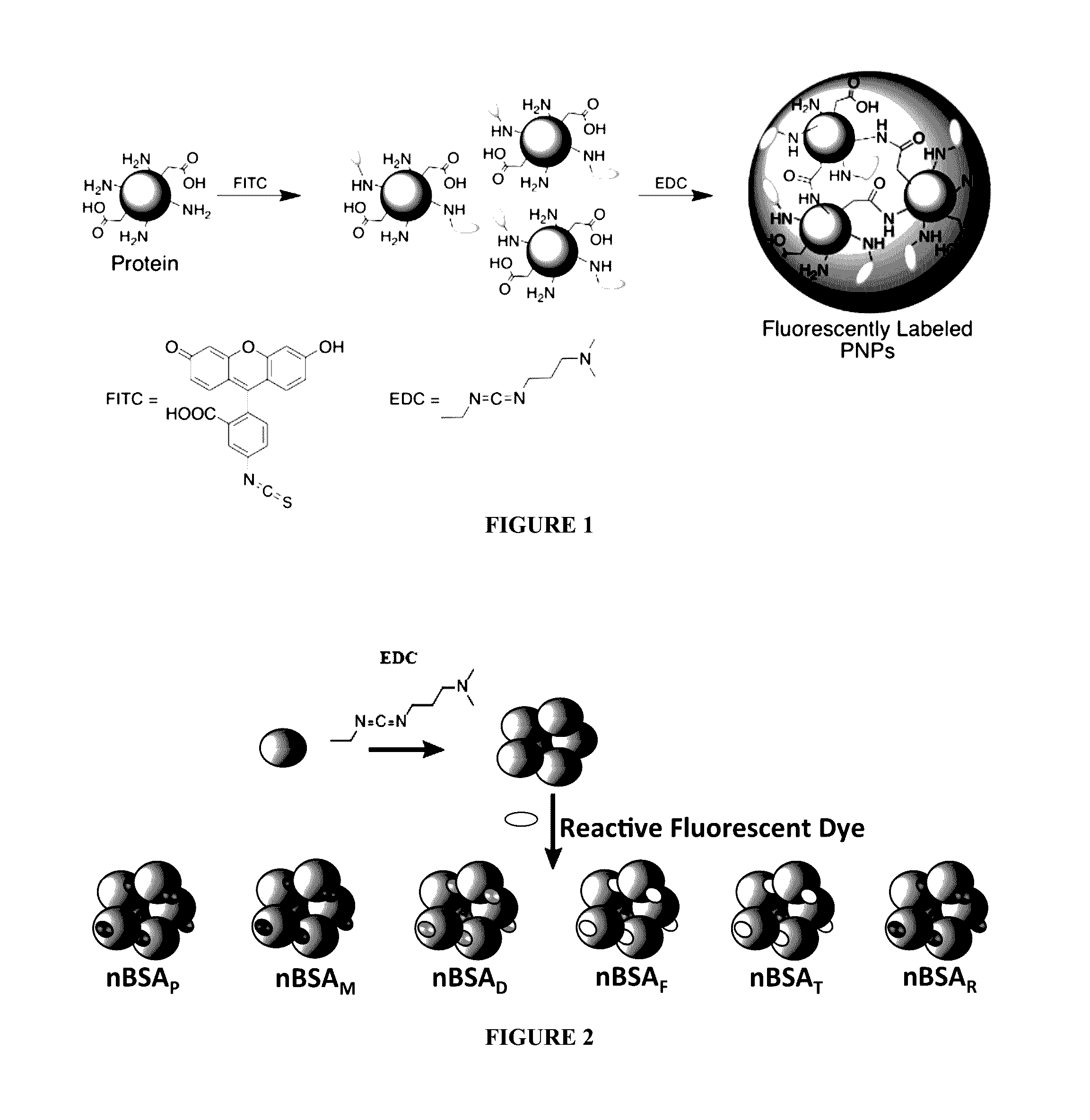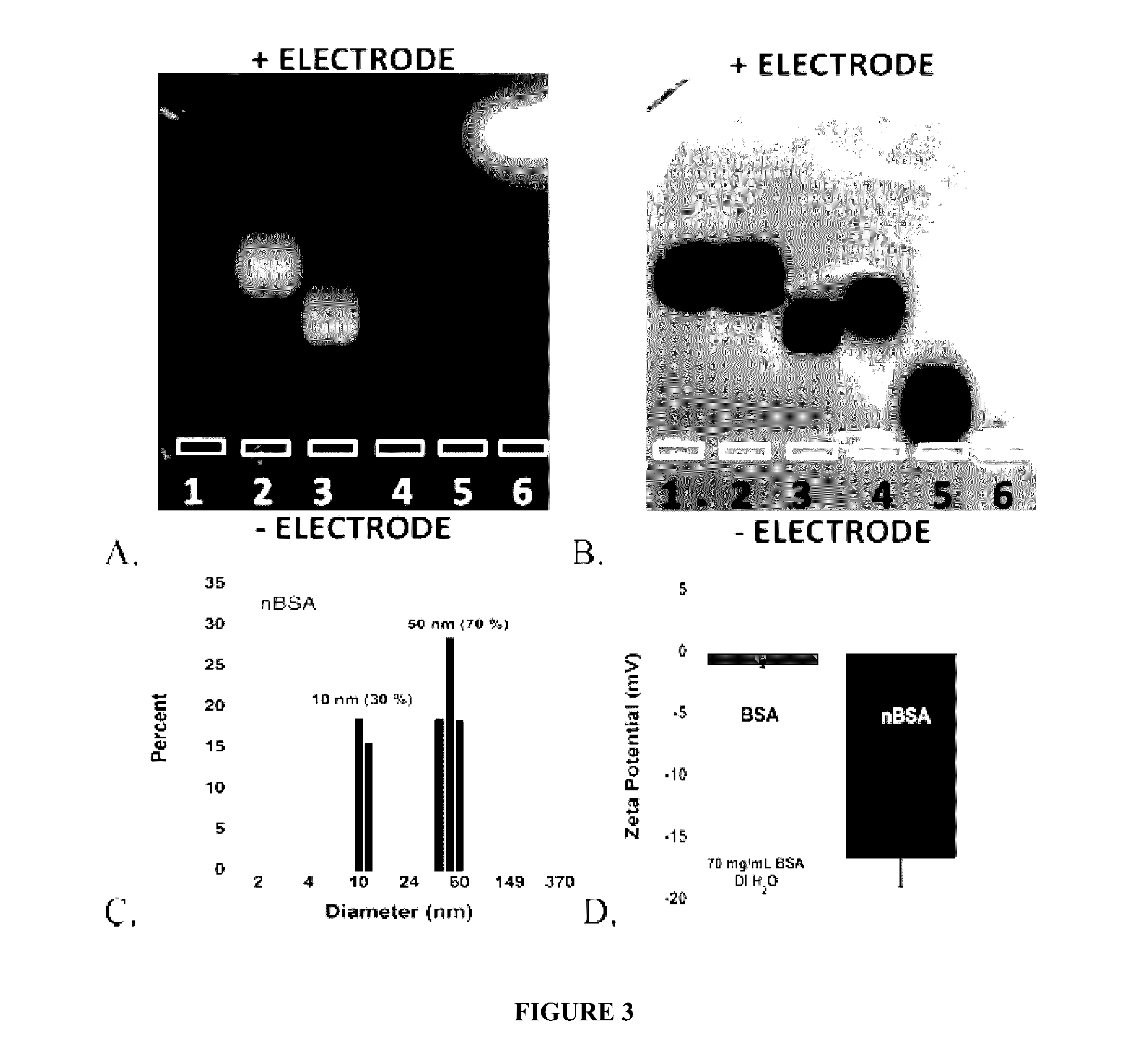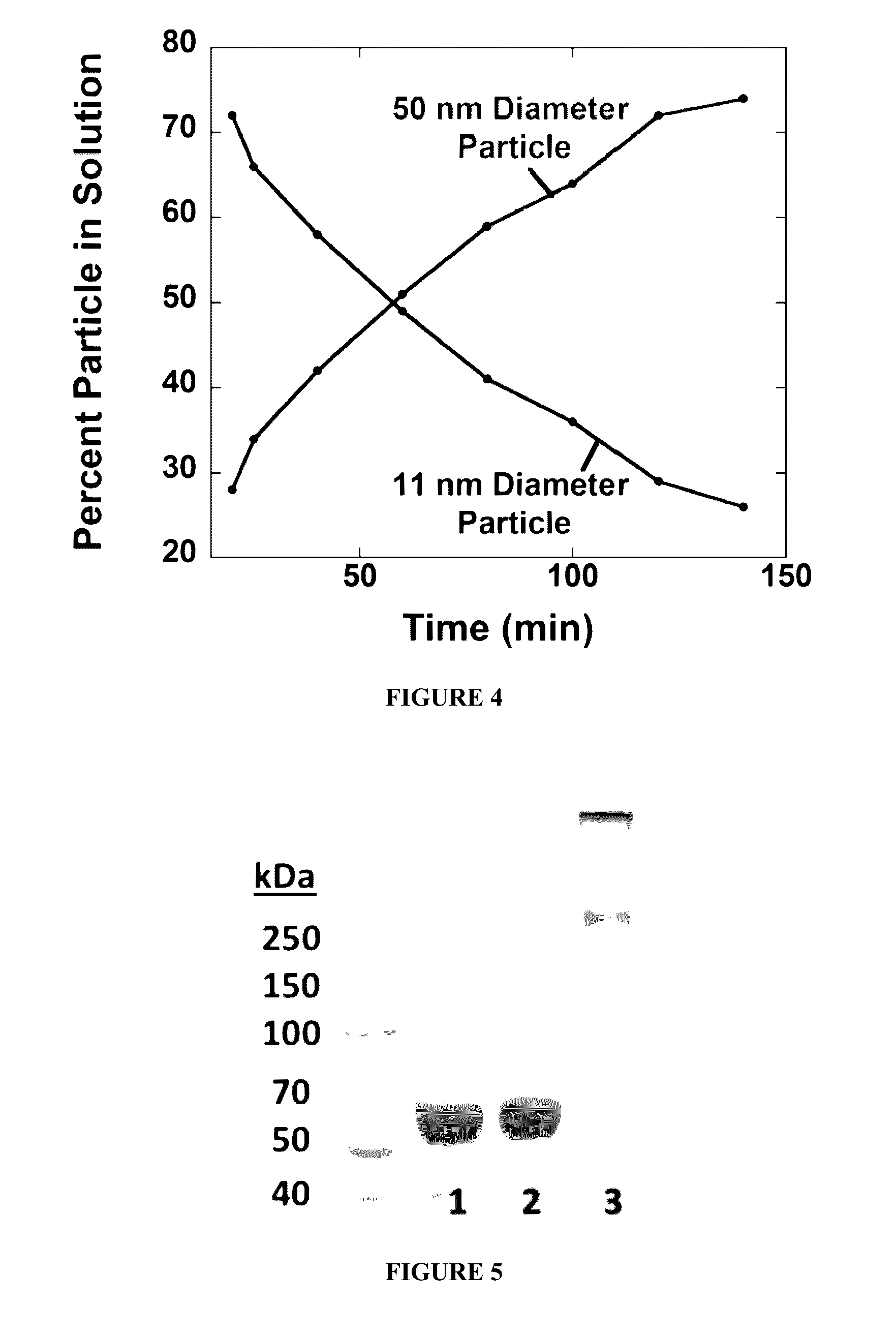Protein fluorescent nanoparticles and methods of synthesis thereof
a protein and fluorescent technology, applied in the field of stable and versatile protein nanoparticles, can solve problems such as restricting wide-spread application in biology, and achieve the effect of less expensive and more flexibl
- Summary
- Abstract
- Description
- Claims
- Application Information
AI Technical Summary
Benefits of technology
Problems solved by technology
Method used
Image
Examples
example 1
[0178]Synthesis and Characterization of Exemplary Nanoparticles In this example, the following abbreviations are used: CD is circular dichroism; TEM is transmission electron microscopy; DLS is dynamic light scattering; PNPA is para-nitrophenyl acetate; SDS-PAGE is sodium dodecyl sulfate polyacrylamide gel electrophoresis.
[0179]Proteins and Chemicals. All reagents were purchased from commercial sources and used as received unless otherwise indicated. For example, glucose oxidase (GO, Aspergillus niger), horseradish peroxidase (HRP, Amoracia rusticana), lipase (Candida rugosa), sodium phosphate (Na2HPO4), fluorescein isothiocyanate (FITC), 1-ethyl-3-(-3-dimethylaminopropyl) carbodiimide (EDC), pyrene-3-butyric acid (PBA), and coumarin 540A (C540A, also known as coumarin 153 and having the formula 2,3,6,7-tetrahydro-9-(trifluoromethyl)-1H,5H,11H-[1]benzopyrano(6,7,8-ij)quinolizin-11-one) were purchased from Sigma (St. Louis, Mo.). Bovine serum albumin (BSA) and catalase were purchased ...
example 2
Synthesis and Characterization of an Exemplary White Protein Fluorescent Nanoparticle
[0229]Synthesis and Size Control of PNPs. Protein solution was prepared by stirring 150 mg of BSA in 1 mL of de-ionized water (dH2O). EDC (1M, dH2O) was added in 10 mM aliquots and stirred for 20 min between additions. Particle growth was monitored by dynamic light scattering (DLS). Reaction was quenched by adding 1 mL of 20 mM CO32− / HCO3− pH 9.3 buffer. The resulting solution was diluted to 1 mg / mL in 100 mM phosphate 500 mM NaCl buffer pH 7.0, and heated to 85° C. for 10 min. The solution was allowed to cool back to room temperature on the bench. A solution of 1-pyrenebutanoic acid N-succinimidyl ester (P, 0.5% (m / m), 0.75 mg / mL, 1.9 mM) in DMSO was added to the protein solution and stirred for 2 h. Samples were filtered in Amicon 100 kDa cutoff centrifuge filter tubes with 10 mM Na2HPO4 pH 7.0 buffer until filtrate was clear of fluorescent dyes (approximately 6× sample volume). This method was re...
example 3
Additional Synthesis and Characterization of an Exemplary White Protein Fluorescent Nanoparticle
[0264]White-emitting nanoparticles were prepared in an analogous manner to the white fluorescent PNPs (W) described in Example 2, i.e. by first stirring 150 mg of BSA in 1 mL dH2O, and then adding EDC (1M in dH2O) in 10 mM aliquots and stirring for 20 min between additions. Particle growth was monitored by DLS, and the reaction was quenched by adding 2 mL of 15 mM CO3− / HCO3− pH 9.3 buffer. In this case, uniform particle sizes were achieved by slowly heating 1 mg / mL solution to 85° C. and allowing to slowly cool back to room temperature. The white fluorescent particles were then synthesized by adding F (0.19 mg / mL, 0.49 mM), M (2.15 mM, 0.68 mg / mL) and R (0.34 mg / mL, 0.54 mM) to 1 mL of nBSA in 10 mM CO32− / HCO3− pH 9.3. Mol ratios of dyes were adjusted as needed until white fluorescence was observed. The reaction was stirred for 2 h and purified by ultracentrifiltration (Amicon, 100 kDa) u...
PUM
| Property | Measurement | Unit |
|---|---|---|
| diameter | aaaaa | aaaaa |
| temperature | aaaaa | aaaaa |
| temperatures | aaaaa | aaaaa |
Abstract
Description
Claims
Application Information
 Login to View More
Login to View More - R&D
- Intellectual Property
- Life Sciences
- Materials
- Tech Scout
- Unparalleled Data Quality
- Higher Quality Content
- 60% Fewer Hallucinations
Browse by: Latest US Patents, China's latest patents, Technical Efficacy Thesaurus, Application Domain, Technology Topic, Popular Technical Reports.
© 2025 PatSnap. All rights reserved.Legal|Privacy policy|Modern Slavery Act Transparency Statement|Sitemap|About US| Contact US: help@patsnap.com



